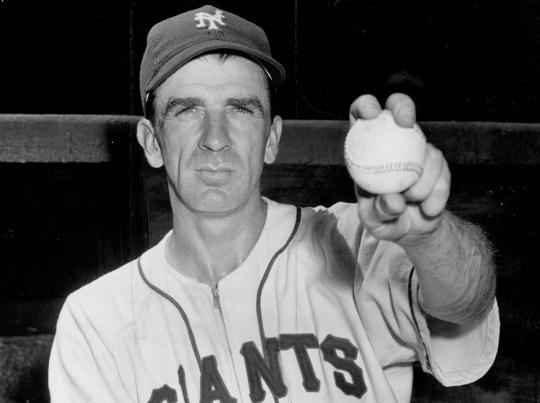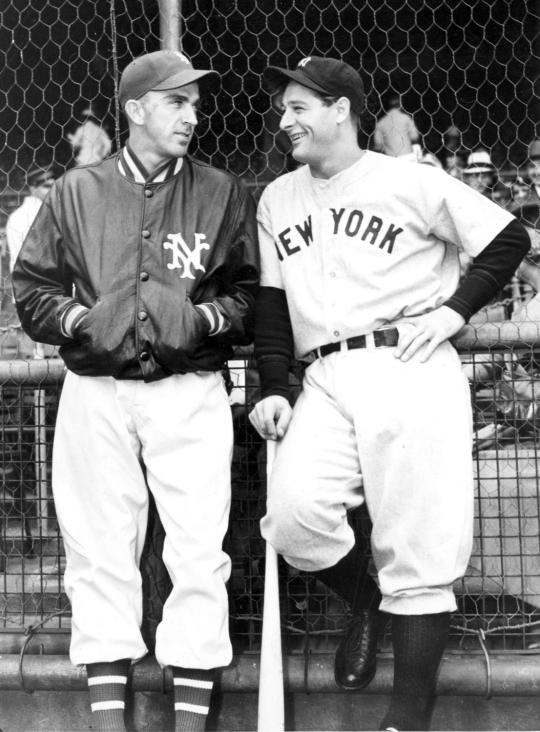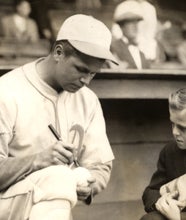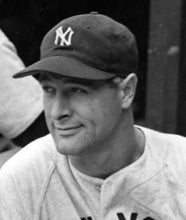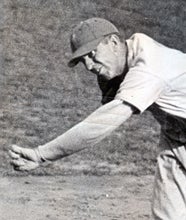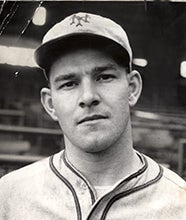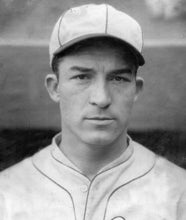- Home
- Our Stories
- Carl Hubbell wins 24th consecutive game
Carl Hubbell wins 24th consecutive game
Hall of Famer Carl Hubbell was a pitcher who had the ability to get hot, and stay hot, at any moment.
He’s most revered for striking out five straight Hall of Famers (Babe Ruth, Lou Gehrig, Jimmie Foxx, Al Simmons and Joe Cronin) in the 1934 All-Star Game. He also threw an 18-inning shutout against the St. Louis Cardinals on July 2, 1933.
But on May 27, 1937, Hubbell put the finishing touches on a streak that means the most to nearly every pitcher: Winning games. On that day, Hubbell came out of the New York Giants’ bullpen during a 2-2 tie and pitched two innings of scoreless relief against the Cincinnati Reds. Teammate Mel Ott, a future Hall of Famer, hit a home run in the top of the ninth to give Hubbell his major league record 24th consecutive victory.
“Unexpectedly entering a fray which in the beginning was not at all of his choosing,” wrote John Drebinger in the next day’s New York Times, “the famous Hub came into the game in the last half of the eighth with the score deadlocked at 2-all, and with no more effort than one would employ in dusting off a shelf, he retired three Reds on infield grounders.”
By May 1937, it seemed like every game was an easy task for the man Giants fans called the “Meal Ticket.”
After compiling a 10-5 record at the 1936 All-Star Game break, Hubbell shut out the Pittsburgh Pirates on July 17 and ignited a second-half surge for the ages. He won his last 16 decisions of the 1936 season, tossing 14 complete games and recording an earned run average of 1.86. In turn, the scuffling Giants went 49-21 after Hubbell’s July 17 win in Pittsburgh and overcame a nine-and-a-half game deficit to capture the National League pennant. Hubbell was honored as the league’s Most Valuable Player.
Though Hubbell would lose Game 4 and his Giants eventually lost the 1936 World Series to the New York Yankees, many fans across the country were still anxious to see if King Carl could keep his regular season win streak alive the following spring. Sure enough, Hubbell rolled through the first month of the 1937 season, continuing to baffle hitters with his signature screwball.
Acting as a sort of reverse curveball that dove down and away to right-handed hitters, Hubbell’s screwball was “One of the most tantalizing shoots that ever zoomed through the air from the pitching mound,” according to writer Sid C. Keener of the St. Louis Star-Times. The screwball’s release motion places tremendous strain on the throwing arm, but Hubbell was unique in that he was able to throw it much longer than the average major league pitcher could withstand.
“The screwball's an un-natural pitch,” said Hubbell, whose left arm eventually warped from throwing it so that his palm faced outward. “Nature never intended a man to turn his hand like that, it's like throwing rocks at a bear.”
National League hitters must have also thought Hubbell’s screwball was unnatural – but perhaps for different reasons. On May 9, 1937, he held the Cubs to one run to pick up his 20th straight win, passing Tim Keefe and Hall of Famer Rube Marquard, both former Giants, to break the major league record.
“When I lose, they’ll have to knock me out of there,” Hubbell told the press. “I’m not going to let this streak worry me and walk them around the bases.”
After earning win No. 24 in Cincinnati, Hubbell’s words rang true on May 30, when the rival Brooklyn Dodgers put an ungracious end to the streak. The interest in King Carl’s streak was at a fever pitch, by then: The crowd of 61,756 was the second largest in the history of the Polo Grounds, as the game brought a new definition to “Standing Room Only.” The neighborhood police and fire departments were brought in for extra support against fans charging the ticket booths, and an estimated 25,000 people were turned away at the gates.
The visiting Dodgers spoiled the party early, however, roughing up Hubbell for five early runs and seven hits. With one out in the fourth, Hubbell, sensing defeat at hand, left the mound on his own accord while the massive crowd gave him their final roar of approval.
“The Giants and Dodgers split a torrid double-header yesterday,” wrote Drebinger in the next day’s Times, “but to the last man hanging from a rafter the conviction was firm that the Giants had won the wrong game.”
Though the game was lost, the day was not for Hubbell: None other than Babe Ruth was on hand between games to present the 1936 MVP plaque to King Carl. The lefty sensation would continue pitching at a high level until 1943, when all those screwball pitches finally caught up to his arm. He would need surgery to remove bone chips from his elbow; a procedure that would end his career. But not before he was able to win 253 games on the mound.
Carl Hubbell was elected to the National Baseball Hall of Fame and Museum in 1947. He passed away on Nov. 21, 1988.
Matt Kelly was the communications specialist at the National Baseball Hall of Fame and Museum


